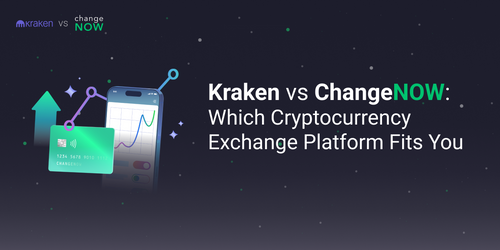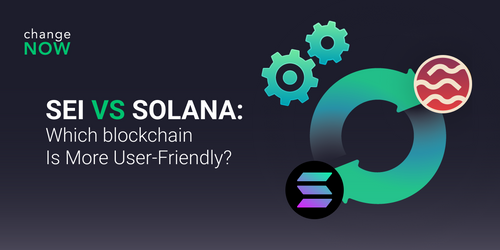Top Projects on Proof-of-Stake
What Is Proof-of-Stake?
Proof-of-stake is a consensus algorithm that determines which participants confirm transactions and validate block information and then are rewarded for this with crypto. Users creating the next block on the blockchain are selected randomly. The larger stake positions – the higher chances to validate.
The proof-of-stake network user just needs enough coins or tokens to purchase the position of a block creator. In contrast, miners working with proof-of-work must invest in processing equipment and incur hefty energy charges to power the machines doing the computations.

To become a validator, a crypto owner offers their coins as collateral, or "stakes" – locks up specific amount of crypto or tokens in a smart contract on the blockchain to get in exchange a chance to validate new transactions and earn a reward, provided that it accurately validates the new data and don’t cheat the system.
As a proof-of-stake system provides access to validators who "lock up" cryptocurrency as a security deposit, hackers can't prevent blockchain transactions or attack crypto assets as they can't access a validator's stake. Attackers must hold more than 50% of the coins to hack a proof-of-stake system and commit a so-called "51% attack", which seems to be a rather expensive task.
In addition, network participants may strip malicious users of their stakes, making all their gains worthless to punish them for trying to attack the blockchain. So, a proof-of-stake system provides an innovative way to secure the network, reducing the possibility of a cyberattack to almost zero.
As a consensus mechanism, proof-of-stake is becoming more prevalent in the cryptoworld keeping currently about 80 different cryptocurrencies running on it.
Ethereum 2.0 (ETH)
Ethereum is a decentralized open-source blockchain system, first described in a 2013 whitepaper by Vitalik Buterin. According to co-founder Gavin Wood, it was designed as a sort of “one computer for the entire planet.”
Ethereum works as a platform for numerous other cryptocurrencies, allowing also for the execution of smart contracts and creating decentralized applications. The concept of creating such a platform was Ethereum’s principal innovation, that further reinforced existing benefits of smart contract technology.
Native currency of Ethereum is Ether (ETH). After the Merge on 15th of September, 2022, that was so being looked forward to, Ethereum network transitioned to the proof-of-stake consensus algorithm while retaining the proof-of-work mechanism of the Ethereum mainnet named then EthereumPoW or ETHW.
The network requires 32 ETH to be staked before a participant can become a validator. A specific number of the validators verify that the block is accurate, so when the majority agrees that the transaction is valid, then the block is finalized and closed. If the validators confirm bad or fraudulent transactions, they may lose some or all of the stake as a penalty.
Ethereum’s blockchain – through the use of its ERC-20 compatibility standard – is able to host tokens, number of those launched is more than 280,000, including for example USDT, LINK and BNB being in the top cryptocurrencies by market capitalization.
Ethereum is currently the largest blockchain for NFT trading activities, and ETH trading pairs are subjects of substantial interest since the emergence of Play2Earn games. ETH is ranked as the first proof-of-stake token by market cap and the second-largest cryptocurrency after Bitcoin. It is available for trading on nearly all of the major crypto exchanges.
Cardano (ADA)
Cardano is a decentralized blockchain platform that provides the creation of applications and tokens. The network and its native ADA token were launched in 2017 by one of Ethereum's co-founders, Charles Hoskinson, and his former colleague Jerry Wood. This open-source project aimed not just to be a dApp development platform, but to bring innovations and create a more secure, transparent and fair society.
The Cardano platform runs on its own-created Ouroboros consensus protocol – the first proof-of-stake protocol designed to reduce the energy costs required for mining, by eliminating the enormous computing resources that the proof-of-work algorithm uses.
ADA token is used as a reward given for work done for the blockchain by users participating in a stake pool. Network participants can use the ADA for value transfer and trading, as well as to take part in staking and the governance systems of the platform or to conduct peer-to-peer transfers across the globe. Since stakers function as nodes that record the network's current state, they are considered validators.
Usually ADA token rewards are earned through running a stake pool by the validator itself or delegating a stake to a stake pool operated by other validators, which is usually used for small stakes. Staking on Cardano network works in a cyclical way, which can make staking ADA highly profitable – the platform offers a 4.5% annual interest rate on all stakes. Users are incentivized every period called "epoch", which is about five days.
Cardano project now remains one of the most popular blockchains in the industry and one of the most promising alternatives to Ethereum and other third-generation PoS-based blockchains, merging features from different blockchains into a single network.
Polkadot (DOT)
Polkadot is an open-source multichain protocol designed to connect and secure diverse blockchains onto a network. Polkadot allows blockchains to be interoperable, providing cross-chain transfer of tokens, assets, and data.
Polkadot was started by Peter Czaban and Ethereum co-founder Gavin Wood, who published the white paper for Polkadot in 2016. The protocol was designed to provide a foundation for a decentralized internet of blockchains, also known as "Web 3" – the term that was coined by Wood in 2014.
Polkadot runs on the nominated proof-of-stake consensus algorithm, processing many transactions on “parachains” – several chains in parallel. This parallel processing power improves scalability of a blockchain ecosystem. The protocol also features the project's native token – DOT, which is used in network governance, staking and bonding the chains.
All DOT token holders have rights and abilities to vote in how the network is run through referenda and also manage protocol upgrades. Protocol incentivizes network participants to act honestly by holding DOT as collateral and rewarding good behavior while cheaters may lose their stakes.
The network incentivizes the participants to act honestly by holding DOT as collateral and rewarding good behavior while cheaters may lose their stakes. DOT holders have rights and abilities to vote through referenda and manage protocol upgrades.
Due to flexibility and adaptability of the network, participants can share information and functionality, and the network can be upgraded automatically for the purpose of implementing new features or removing bugs with no fork needed.
The protocol allows users to customize their own blockchain’s governance according to their needs and evolving conditions. All participants perform various duties to ensure the security and maintenance of the network, as well as to eliminate bad behavior.
Polkadot is among the most ingenious innovations of the blockchain industry from the perspective of technology and economic value, and perhaps is one of the most effective projects working to improve the fundamental technology powering dApps.
Tezos (XTZ)
Tezos is an open-source blockchain network using proof-of-stake mechanism consensus that can execute peer-to-peer transactions and work as a platform for deploying smart contracts. It was launched in 2014 by Arthur Breitman under the pseudonym L.M. Goodman and Kathleen Brieitman.
Tezos is one of the first crypto assets to use the Delegated proof-of-stake algorithm, due to which the network avoids the concept of mining and provides stakers with the opportunity to delegate their XTZ – native Tezos’ coins – to network validators.
As the term staking became "baking" being labeled so by proof-of-stake mechanism, validators on the network turned "bakers". Bakers are rewarded for working and are also penalized if they approve an invalid transaction that reflects on the baker, delegating their XTZ because of Tezos algorithm.
Governance with the aim of XTZ holders empowerment is emphasized in Tezos network. The ability of the network to avoid hard forks and reduce inequality between miners and users of cryptocurrencies is clearly spelled out in the white paper of Tezos and is achieved by self-regulating the network.
XTZ holders can modify the network in real time, preventing community fragmentation with voting on amendments – protocol upgrades proposals that are then directed to developers of Tezos. Users must have 8000 XTZ to vote on amendments and earn rewards for validating according to the principles of proof-of-stake consensus: the more XTZ – the higher chances to earn.
Tezos is the first proof-of-stake cryptocurrency supported by all major staking exchanges. It is decentralized and adaptable to innovation due to Tezos Foundation's radical transparency and the emphasis on governance in the form of collective decision-making. XTZ is promising enough to be considered one of the top proof-of-stake coins, even if it is taking some time to mature and reach its full potential.
Bottom line
Even in such a beautiful new and ever-growing space as the crypto universe nothing is perfect. There are some issues that developers and architects of proof-of-stake networks, coins, and protocols haven’t solved yet.
For example, concerns of an outsized influence on a proof-of-stake system by validators who hold large amounts of a blockchain’s token; or the arduous planning and highly deliberation process of cryptocurrency migration from a proof-of-work to a proof-of-stake consensus mechanism, to go through which to ensure the blockchain’s integrity from start to finish and beyond.
“Proof of stake is not as extensively vetted as proof of work, which has secured billion-dollar blockchains for over a decade now.” - Amaury Sechet, founder of eCash
But despite imperfection, proof-of-stake as a consensus mechanism is becoming prevalent in the cryptoworld – not least because proof-of-work has a bad reputation earned for the massive amounts of electricity consumed for computational power. As a result, crypto mining concentrates in a few regions with lowest electricity costs.
Proof-of-stake takes into account heightened concern about the environmental impacts of proof-of-work blockchains and offers better solutions for this problem through its modest energy consumption and widely distributed infrastructure. For example, the update of Ethereum due to Merge reduced energy consumption by ~99.95% according to the network's website.
Staking is offered as a feature on Coinbase, Binance, and Kraken platforms and on Everstake dedicated staking platform. Proof-of-stake mechanism allows more and more participants to get involved in blockchain systems as validators due to its higher level of accessibility and no need to buy expensive computing systems and consume massive amounts of electricity to stake crypto – coins are all you need.


